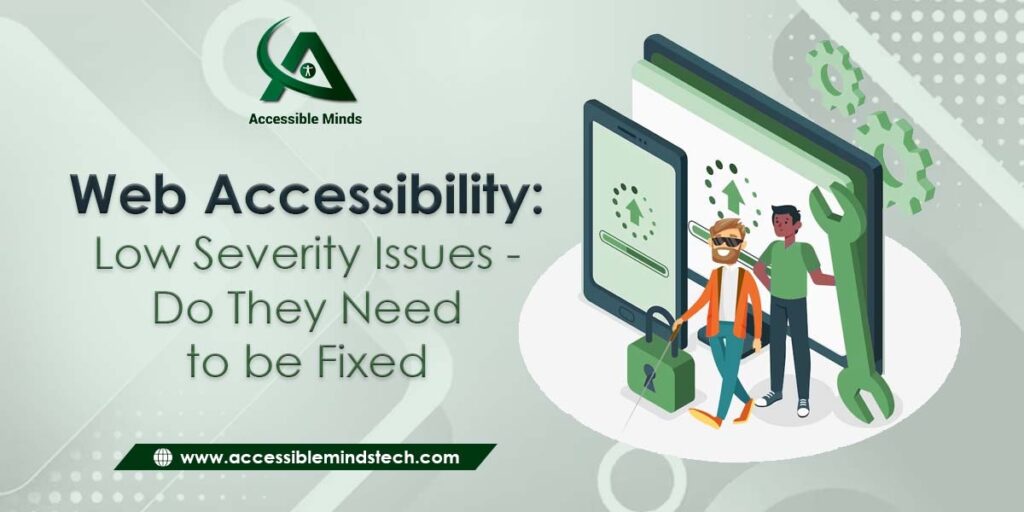Web accessibility has become an increasingly important topic in the digital world, focusing on making websites and web content usable for everyone, including individuals with disabilities. To achieve this goal, web developers and designers often follow accessibility guidelines, such as the Web Content Accessibility Guidelines (WCAG). These guidelines categorize issues based on severity, from critical to low. The question arises: if an item is marked low in severity, does that need to be fixed? Let’s delve into this debate.
Understanding Accessibility Severity Levels
Accessibility issues are categorized into different severity levels to help prioritize and address them effectively. These levels typically include:
- Critical: These issues severely impact users with disabilities, making content unusable or causing critical barriers.
- High: High severity issues are significant barriers to accessibility but may not render content completely unusable.
- Medium: These issues are moderately problematic and may cause some inconvenience for users with disabilities.
- Low: Low severity issues are minor inconveniences but do not significantly impact accessibility.
The Case for Addressing Low Severity Issues
- Cumulative Impact: Even though low severity issues individually may seem minor, they can accumulate and create significant barriers. Users with disabilities often encounter multiple accessibility issues, and fixing low-severity problems can improve their overall experience.
- Legal Compliance: In many regions, web accessibility is legally mandated. Ignoring low severity issues might still result in non-compliance, potentially leading to legal consequences.
- Best Practices: Following accessibility guidelines isn’t just about meeting minimum legal requirements; it’s also about following best practices. Fixing low severity issues demonstrates a commitment to making your digital content more inclusive.
- User Experience: A website with fewer accessibility barriers provides a better user experience for all visitors, not just those with disabilities. Resolving low severity issues can lead to increased user satisfaction and engagement.
- Future-Proofing: As technology and user expectations evolve, what might be considered low severity today could become high or critical severity in the future. Addressing these issues now can future-proof your content.
The Case Against Addressing Low Severity Issues
Resource Constraints: Prioritizing low severity issues can be resource-intensive, especially for organizations with limited budgets and development teams. It might be more practical to focus on high or critical severity issues first.
User Preferences: Some users with disabilities may have individual preferences or assistive technologies that mitigate the impact of low severity issues. In such cases, addressing these issues might not be a top priority.
Balancing Act: Addressing low severity issues can divert resources from other important web development and maintenance tasks, impacting overall site performance and functionality.
Finding a Balance
The decision on whether to fix low severity issues depends on several factors:
- Legal Requirements: If your website must adhere to legal accessibility standards, even low severity issues should be addressed to maintain compliance.
- User Impact: Consider user feedback and testing with individuals who have disabilities. Their experiences and preferences should guide your decision-making.
- Resource Allocation: Assess your organization’s resources and capabilities. Prioritize low severity issues if you can address them without sacrificing critical tasks.
- Future Considerations: Think about the long-term. Will fixing low severity issues prevent potential high severity problems in the future?
- Best Practices: Following accessibility guidelines is not just a matter of severity levels; it’s about creating a more inclusive digital environment. Striving for a fully accessible web should be the ultimate goal.
While low severity issues may seem less critical, they should not be dismissed. A holistic approach to digital accessibility services, which includes addressing all levels of severity, is vital to creating a more inclusive online experience for everyone. It’s not just a matter of legality; it’s about promoting a culture of digital inclusivity and improving the web for all users, regardless of their abilities or disabilities.

